Subfamily Rutoideae | Scientific name Choisya Rank Genus | |
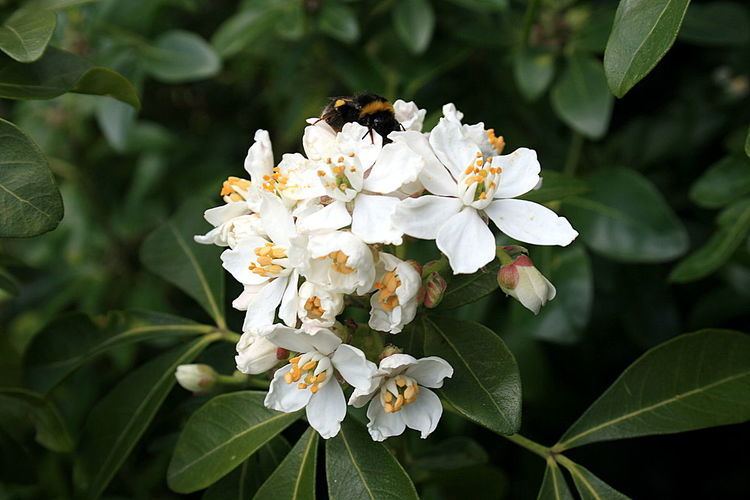 | ||
Similar California lilac, Redclaws, Abelia, Mock‑orange, Fetterbushes | ||
Plant id guide choisya ternata
Choisya /ˈʃɔɪziə/ is a small genus of aromatic evergreen shrubs in the rue family, Rutaceae. Members of the genus are commonly known as Mexican orange or mock orange due to the similarity of their flowers with those of the closely related orange, both in shape and scent. They are native to southern North America, from Arizona, New Mexico, Texas and south through most of Mexico. In its generic name Humboldt and Bonpland honoured Swiss botanist Jacques Denis Choisy (1799-1859).
Contents
- Plant id guide choisya ternata
- Choisya ternata mexican orange mock orange
- Description
- Uses
- Chemistry
- Species
- Pests and diseases
- References

Choisya ternata mexican orange mock orange
Description
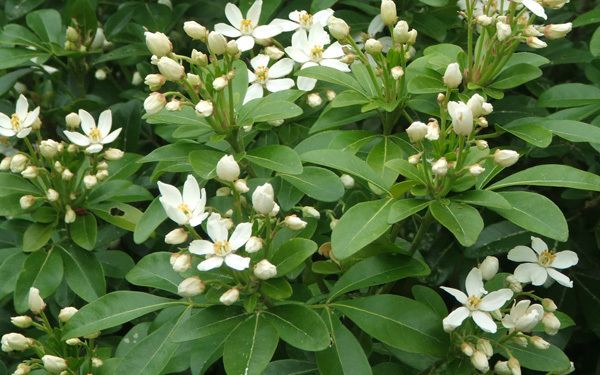
The species grow to 1–3 m (3.3–9.8 ft) tall. The leaves are opposite, leathery, glossy, palmately compound with 3-13 leaflets, each leaflet 3–8 cm (1.2–3.1 in) long and 0.5–3.5 cm (0.20–1.38 in) broad. C. ternata has three broad leaflets, while C. dumosa has up to 13 very narrow leaflets. The flowers are star-shaped, 3–5 cm (1.2–2.0 in) diameter, with 4-7 white petals, 8-15 stamens and a green stigma; they are produced throughout the late spring and summer. The fruit is a leathery two to six sectioned capsule.
Uses
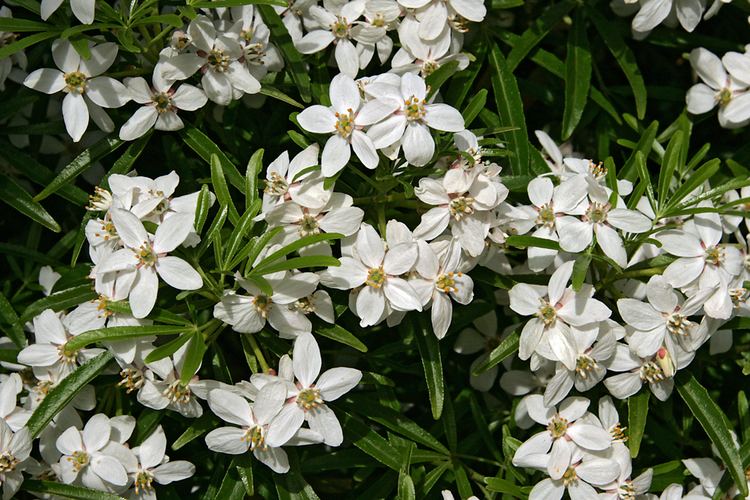
Choisya species are popular ornamental plants in areas with mild winters, grown primarily for their abundant and fragrant flowers. The foliage is also aromatic, smelling of rue when bruised or cut. The most commonly found cultivars in the horticultural trade are the species, C. ternata, the golden-leaved C. ternata Sundance ('Lich'), and the inter-specific hybrid C. 'Aztec Pearl' (C. dumosa var. arizonica × C. ternata). All three varieties have gained the Royal Horticultural Society's Award of Garden Merit.
The flowers are also valued for honeybee forage, producing abundant nectar.
Chemistry
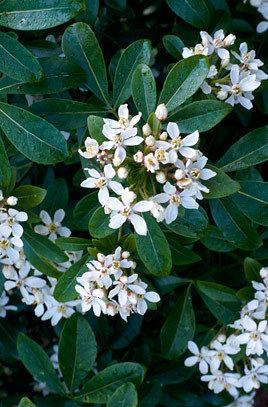
Many quinoline alkaloids have been isolated from leaves of Choisya ternata.C. ternata contains an alkaloid (ternanthranin), a volatile simple anthranilate that can be considered responsible for the antinociceptive activity of the crude plant extracts.
Species
Pests and diseases
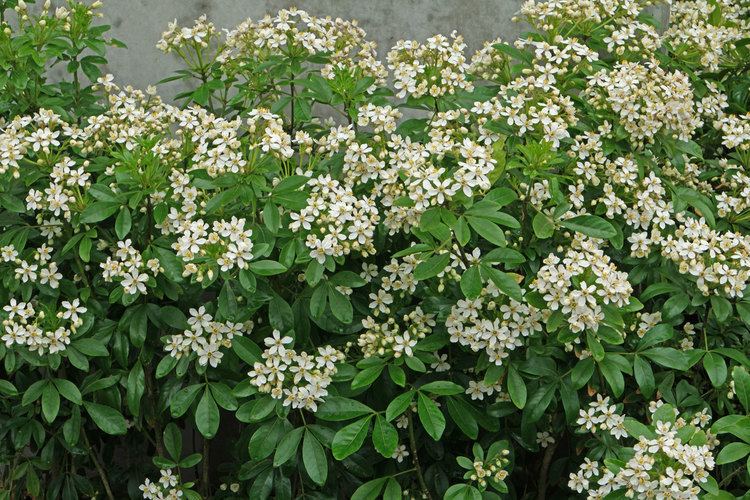
Choisya can be prone to attack by pythium root rot, particularly when propagated and grown in pots for the horticultural trade. In north-west Europe the main pest is snails, which eat the bark of even mature specimens, resulting in minor die-back of branches where ring-barking has occurred.
